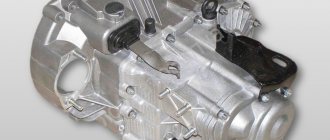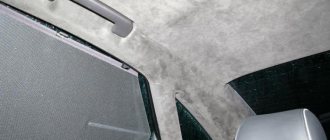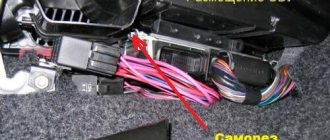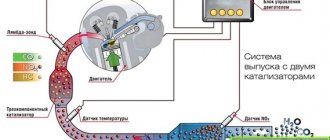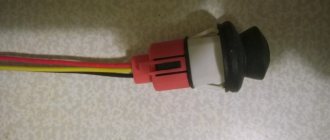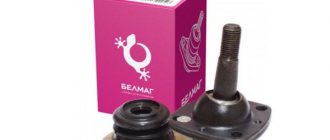For a vehicle to function properly, it must be fueled with high-quality fuel. But even the most highly purified gasoline will not save you from rust in the gas tank if it has already appeared.
To prevent its smallest particles from leaking through the filter and damaging the engine, you need to regularly clean the fuel storage from corrosion.
Read the article on how to clean the inside of a gas tank from rust.
Preparing for cleaning
To prevent rust from accumulating in the gas tank, it must be cleaned regularly. Professionals advise doing this at least 3 times a year.
Before you begin the main procedure for removing corrosion, you need to carry out several preparatory measures:
- Empty the tank. It should not contain gasoline. It must either be developed or drained.
- Remove the tank, open the cap and turn it over to remove any remaining gasoline from the lines and from the bottom.
- Place the container in such a way that it is convenient to pour the cleaning composition into it.
Even preparatory activities should take place in a well-ventilated area. Gasoline tends to evaporate, and its vapors are toxic to humans.
Causes and signs of gas tank contamination
Many car enthusiasts don’t even think about the fact that the insides of the gas tank may need to be flushed or cleaned. Indeed, this is a completely closed container, where does dirt or dust come from?
However, the older the car, the more clogged the fuel tank becomes. And this can be blamed on several factors:
- Tank service life - during operation, rust forms inside a metal container under the influence of temperatures.
- Using low-quality fuel, which contains large amounts of dirt and sediment.
- Failure to use cleaners to remove impurities from all elements of the fuel system.
The gas tank cap allows you to safely pour fuel through the filler pipe into the tank container
The main sign of a dirty fuel tank can be considered jerks in engine operation at low speeds. Water and impurities in gasoline prevent the engine from using all its intended power, so at low speeds the car begins to twitch.
When to clean the fuel tank
Cleaning and flushing the fuel tank is a prerequisite for its reliable operation. However, it is not recommended to wash it too often. The procedure can be performed once every two or three years, it all depends on the operating conditions and the quality of the fuel being poured.
If the car is constantly refueled at questionable gas stations on the highway, it is recommended to clean the tank capacity once a year. This will save the fuel filters from quickly depleting and eliminate the possibility of the lines becoming clogged with dirt and impurities.
For the entire fuel system (including the gas tank), an important operating factor is the use of high-quality fuel.
Actually, cleaning the gas tank is necessary to ensure the high-quality operation of all elements of the fuel supply system. After all, small particles of sediment and impurities can enter the engine through the tank, which can lead to serious damage.
Which methods are not suitable?
It is not recommended to use mechanical cleaning
to remove corrosion .
The use of abrasives or hard metal objects may simply cause a hole to appear in the tank. For the same reason, high concentration acids should not be used to remove metal oxide.
Do not throw nuts, washers or bolts into the container . When shaking, the intact metal will be knocked off along with the rust, causing the tank to quickly become unusable.
MY MOTORCYCLE
Rust in the tank - this problem faces owners of mainly old motorcycles. Sooner or later it appears, especially if the equipment is used incorrectly. Yes, and in gasoline now you can find water and other troubles that affect the condition of the metal. So what should we do? We need to clean it! Of course, the filtration system will not allow any more or less large pieces of rust into the carburetors/injector, but sooner or later it will come out sideways!……So let’s look at options for cleaning the tank. I won’t say anything new, but I hope it will be useful to someone.
First, let's look at a couple of the most significant and common ones:
The first method is the “old-fashioned” one. I’ve seen it on many resources, so it’s generally accepted. Further actions depend on how deep the corrosion has eaten into the tank wall. If it is significantly covered with rust from the inside, then you can use a simple and reliable method.
It is necessary to remove the gas tank, drain the remaining gasoline from it, rinse it with water and pour a couple of handfuls of nuts (not large ones) into it. After which we stock up on patience and strength, and begin to shake the tank so that the nuts knock off all the rust from the walls. If desired, you can replace the nuts with pebbles or sand; sometimes the remaining rust is cleaned with sand after the initial treatment of the gas tank with nuts. Fill with gasoline for final rinsing. After washing, drain the mud and see what’s wrong with the tank. If there are still small rust residues left, you can use already proven orthophosphoric acid or special rust converters.
Wikipedia: “Orthophosphoric acid is also used to remove rust from metal surfaces. Forms a protective film on the treated surface, preventing further corrosion.”
Next option: Take the tank, drain the gasoline, blow out or dry the tank with the cap open. When everything is dry, take about 0.5 liters of any rust converter (chemicals), of which there are countless quantities in any auto shop. Alternatively, the same orthophosphoric acid. But be careful with it: don’t breathe or drip on the paintwork. Close the cap and twist the gas tank so that the liquid wets all the inner walls. We wait a little - from 25 minutes to an hour (depending on the temperature) and the whole mess. pour out what has formed. To clean the container from chemical residues, you can rinse it with plain water and baking soda. Soda neutralizes acid residues and softens the water, which washes absolutely everything. But do it carefully. We drain the remaining soda and rinse it with running water, and simply dry the tank.
As a folk remedy, some “Kulibins” take Coca-Cola or something like that (there’s plenty of nonsense), heat it to 35-40 degrees and leave it for a couple of hours. Why this water? The fact is that if you look at the chemical composition, cola also contains orthophosphoric acid, but it is slightly less than in the rust converter. But, as they say, they can eat away everything, including rust. Another interesting fact: all this machmala, along with rust, can be used to clean chrome or tiles with a toilet bowl well.
Let's return to the main options: the “scientific” method. Those who fumble around in physics will quickly grasp it, but the rest either don’t take risks or suffer. School physics course: resort to the help of electrolysis.
Attention - this work causes the release of harmful and flammable gases! They must be carried out in a well-ventilated area!
For this method, you will have to pour the electrolyte solution into the gas tank. Regular washing soda (sodium carbonate) is suitable as an electrolyte. If you can’t find it on sale, you can heat regular baking soda in the oven (160-180 degrees, for about 30-40 minutes). The output is sodium carbonate. Then pour water into the tank and stir the above-mentioned sodium carbonate into it. For 15 liters of gas tank volume you will need approximately five tablespoons.
An electrode is immersed in the resulting electrolyte solution (without touching the walls of the tank - to avoid a short circuit; it is not recommended to use a stainless steel electrode to avoid the release of particularly harmful gases during the electrolysis process). An ordinary ferrous metal, that is, a banal piece of iron or iron wire, will do as the electrode itself.
Then the minus is connected to the gas tank body, and the plus to the electrode. To the body is MINUS (this will be scientifically called CATHODE), and to the electrode is PLUS (ANODE). Rust will begin to disappear from the walls of the tank and materialize on the electrode. The main thing is not to confuse the polarity if you don’t want to corrode the tank into trash! Then we connect direct current and observe the result.
Hydrogen is released at the cathode and oxygen is released at the anode (hence the intense oxidation-corrosion of the electrode). The healing effect occurs due to hydrogen, firstly, it acts like sandblasting from the inside and removes soft rust even where sandblasting could not be reached, and secondly, due to hydrogen, the metal is restored from its oxide (iron oxide - rust), the restoration occurs better if heat is present.
Do not use stainless steel as an electrode, because During electrolysis, a by-product is released - hexavalent chromium, a very unhealthy thing, toxic, carcinogen.
Another option I found online was a guy’s reasoning (sorry, I didn’t write down his name): unscrew the faucet and insert a fitting with an air supply, but the stream should be strong, install a very fine mesh on the side of the tank lid. small. But before that, pour a small fraction of pebbles or sand into the tank. Well, turn it all on! I don’t know how much it will help, but it’s an option.
After cleaning the gas tank from rust using any method, it must be protected from repeated corrosion. The popular method is epoxy resin. It is heated and poured into the tank, after which the tank is rotated by hand until the epoxy covers its inside walls with a thin layer. Once frozen, they form a coating similar in structure to glass. But this method also has a disadvantage - if the motorcycle touches the gas tank against something, the epoxy will break like real glass, and it will take a long and tedious time to remove the fragments from the gas tank. In addition, there have been cases where small fragments of cured epoxy resin entered the fuel system, and the consequences were not very pleasant. Therefore, you can look, again, for something from chemicals for anti-corrosion treatment, like “Kreem”. They have their own application features, but this is a topic for a whole separate article.
Sources: ragingbiker.ru; buccaneer.io.ua/s108250; Wikipedia; opposit.ru; and various motorcycle forums.
Modern methods of protecting tank coatings from rust
More advanced and reliable methods of protecting the internal surface from rust formation are technologies for applying a protective coating using multi-component paints and coatings.
Ethyl silicate coatings with the addition of zinc powder
One of the most effective means is coating the inner surface of ethyl silicate coatings with the addition of zinc powder. The technology is based on the polymerization process of ethyl silicate compounds. The zinc powder contained in these compounds forms a coating that does not react with iron and water. In addition, this coating can withstand heating up to a temperature of 200 degrees, which fully corresponds to the heating mode of the tank in the bathhouse.
Painting with heat-resistant paints that provide protection from moisture allows you to protect the tank from corrosion for up to 7 years. One of the products is Cetra, a heat-resistant paint that can withstand heat up to 350 degrees. After hardening, it withstands contact with most aggressive substances, so there will be no problems with heated water when covering the surface of the tank.
Epoxy enamels
Epoxy enamels, when applied to a surface, form a uniform coating that can withstand metal heating up to 120 degrees. This is one of the most affordable means for processing a metal tank. The product has high adhesion and at the same time an expansion coefficient close to that of metal. The plasticity of epoxy compounds allows for reliable surface coating regardless of temperature changes. In addition to recipes that you can prepare yourself based on liquid glass and aluminum powder, the market offers compositions for treating heating devices and sealing seams of high-temperature equipment.
Polymer compounds saturated with metal powder
In addition to the above means, a good effect is obtained by using anti-corrosion metal-filled compounds. These polymer compounds, saturated with metal powder, form a stable surface coating, which over time, through the process of diffusion, forms a reliable protection for the metal. The positive side of this product is its reliability and resistance to mechanical stress. Enamel is not afraid of not only temperature changes, but also mechanical damage, it is not afraid of impacts, which is important for a water tank in a bathhouse.
As for heat resistance, the enamel can easily withstand temperatures up to 300 degrees. An example of the use of such products is enamels for the restoration and repair of bathtub coatings.
Now that almost the entire arsenal of means for installing a protective coating has been revealed, all that remains is to choose a product, prepare the tank and apply the protective layer. Moreover, all methods and means do not require the use of special equipment and special skills to successfully complete the work.
How often and when to clean the gas tank
Experts recommend performing this cleaning of the gas tank before the onset of winter cold. The fact is that water accumulated at the bottom of the tank can freeze in winter, which leads to malfunctions of the fuel pump, and the gas tank itself can be ruptured by expanding ice.
How often you clean your gas tank will depend on various factors, including the quality of the fuel and how much your vehicle is used. Ideally, such work should be performed annually, but at least once every two years. Cleaning the gas tank itself is not particularly difficult, so every car owner can handle this job.
Where does rust come from in a water tank?
The appearance of rust in the tank of a sauna stove is common for containers with an open volume. This is especially true for homemade containers, which are created using steel or metal sheets or large diameter pipe sections.
Upon contact with water, and even more so when the temperature rises due to a chemical reaction, the walls are first covered with a small layer of oxide, and over time the corrosion process becomes widespread. The containers most susceptible to these processes are in bathhouses, which are used occasionally, and especially in cold times, when the room remains unheated and after the procedure is completed, the water is drained from the tank.
Corrosion does not bypass tanks in heated rooms; this process takes a little more slowly, but there is no escape from it. The process lasts slowest in tanks that are constantly filled with water, but here, too, over time, rust is deposited on the walls.
There are several reasons for the occurrence of rust - contact of water with unprotected metal, the presence of iron oxide in the water itself, saturation with chemically active substances that promote corrosion.
Cleaning a motorcycle tank from internal rust
Maybe it will be useful for someone... In general, what can I tell you, friends. If you wash your motorcycle tank from rust, don’t repeat my mistakes. :))))) the tank is 25 years old, and apparently it stood empty and rusted for a long time.
Obviously, all previous actions (rust converter, abrasive, solvent) gave a very mediocre result. that is, the rust remains inside the tank. and not just a little, but quite a lot. Which gave me the idea to try a chemist I knew with a soldering iron. The chemist quickly gave up and said that there is such a cool thing -
citric acid... which housewives add to all sorts of goodies. So, if you make a 3% solution of this very acid (hot solution), it will dissolve all the rust. It won’t peel off, won’t scrape off, but rather dissolve. Tank 24 liters. you need 720 grams of citric acid. but I waited and bought 620. The result was a slightly weaker acid. Considering that an 8 gram bag costs 7 rubles, then 620 grams came out fine. In chemical stores, a kilo costs 140 rubles, but for some reason they don’t sell it to private individuals.
So, I filled the tank with this hellish swill as hot as possible from the tap. Of course, first I dissolved all the powder in 2 liters of water (it will be a pain to dissolve in a tank). I left the full hot tank overnight. After 6 hours it had not yet cooled down, but it stood for about 14 hours. In the morning I successfully drained it. Typically, he poured in clear water and poured out yellow-brown water. I washed it with 10 liters of water, shook out the remaining peeling paint - and voila! There is no rust in the tank! only gray metal and remnants of paint. And before that, rust was everywhere. Glory to citric acid!
We suggest you read How to remove glue from a sticker and the sticker itself: from plastic, glass, bottles, clothes, refrigerator or car
So! The correct procedure for cleaning a motorcycle tank is:
1. Drain the gasoline 2. Rinse with water, remove all dirt that has already peeled off and is floating, rinse again with water. 3. Pour a 3% hot (!) solution of citric acid overnight (or until it cools down). The best reaction is in a hot solution. Therefore, you can wrap the tank with a blanket or quilted pad so that it does not cool down so quickly. 4. Drain the acid, rinse the tank with water, possibly with the addition of soda. 5. wash with phosphoric acid or rust converter. Converter according to instructions. The acid creates a film on the surface of the iron that prevents oxidation of the metal (rusting). 6. rinse with water, dry and that’s it. You can use it.
On the forums it is generally recommended that after all these procedures, fill the inside of the tank with epoxy. Think. but even without this, the result exceeded expectations. Thanks to chemists and citric acid!
How to clean a gas tank from rust and dirt without removing it from the car
The gas tank, like any actively used container, needs to be cleaned occasionally. Water accumulates in it, which has come from drops of condensate, as well as dirt - it gradually formed from dust and various suspensions in the fuel. I propose to study innovative methods from the past, which are still useful to many car enthusiasts today.
Why does all this need to be removed? Water freezes at sub-zero temperatures and makes it difficult to start the engine in cold weather. It may stall altogether and the car will not move. Water in the fuel tank can cause corrosion.
Dirt itself causes great harm to mechanisms: it clogs pipelines and injectors. The filter cannot cope, and all this leads to increased fuel consumption.
To keep the gas tank clean, it must be removed and cleaned, a process that is quite complex. But several simpler “folk” solutions were nevertheless invented. More than one generation of motorists have been using them and passing them on “by inheritance.”
Removing water from the gas tank
Removing water from a gas tank is not difficult at all, and there is no need to open the container and remove it from the car. All you need to do is use a solvent or acetone. You can also find ready-made special chemicals on sale, which are designed specifically for binding and subsequent removal of liquid from the gas tank.
It is necessary to pour acetone or solvent into the tank at the rate of 10 milliliters of liquid per 1 liter of available fuel. Subsequently, such chemistry binds water and burns without any problems for the engine, thereby preventing the occurrence of serious engine malfunctions, including the formation of rust on pipelines and injectors.
Draining gasoline from the gas tank
Is it possible to flush the tank with gasoline?
Washing with gasoline (diesel fuel) is a mandatory step in all cleaning procedures. The fact is that after any, even the most thorough washing, a small amount of acid, acetone or washing powder inevitably remains in the gas tank. You cannot install such a tank on a car, because all this sediment will get into the fuel system, and from it into the engine.
Before pouring gasoline, it is recommended to dry the tank with a hairdryer - warm air will quickly dry all corners of the gas tank cavity. It will take a day or more for the container to dry on its own.
Therefore, after completing all cleaning procedures, it is necessary to carry out the last one - rinse the tank with fuel:
- Reinstall the tank.
- Connect all necessary lines.
- Fill the gas tank to the brim with gasoline.
- Close the lid.
- Start the engine and allow the fuel to circulate through the system.
- Add gasoline as it leaves the highways.
Video: an alternative method of flushing gas tanks
It is very important to fill the tank full immediately, and it is not recommended to use fresh gasoline for this purpose. It is better to prepare cans of fuel in advance so that any sediment remains at the bottom.
How to protect a tank from corrosion using improvised methods
Before starting the fight against corrosion, it is recommended to comprehensively analyze the cause of the problem. First of all, it is worth getting your water tested. However, if you place water from a well or borehole in a clean transparent glass container and observe it, it is not so difficult to determine the increased iron content - an orange precipitate will form at the bottom on the second day. In this case, you will not only have to protect the tank from iron oxide, but also install a water purification station.
The second point is to choose the right rust removal strategy. If the sinks are deep and entire layers are peeling off on the walls, a major cleaning will be required using a full range of methods, including mechanical and chemical cleaning.
If the rust is simply washed off or wiped off with a rag, then you can get by with the use of chemicals.
